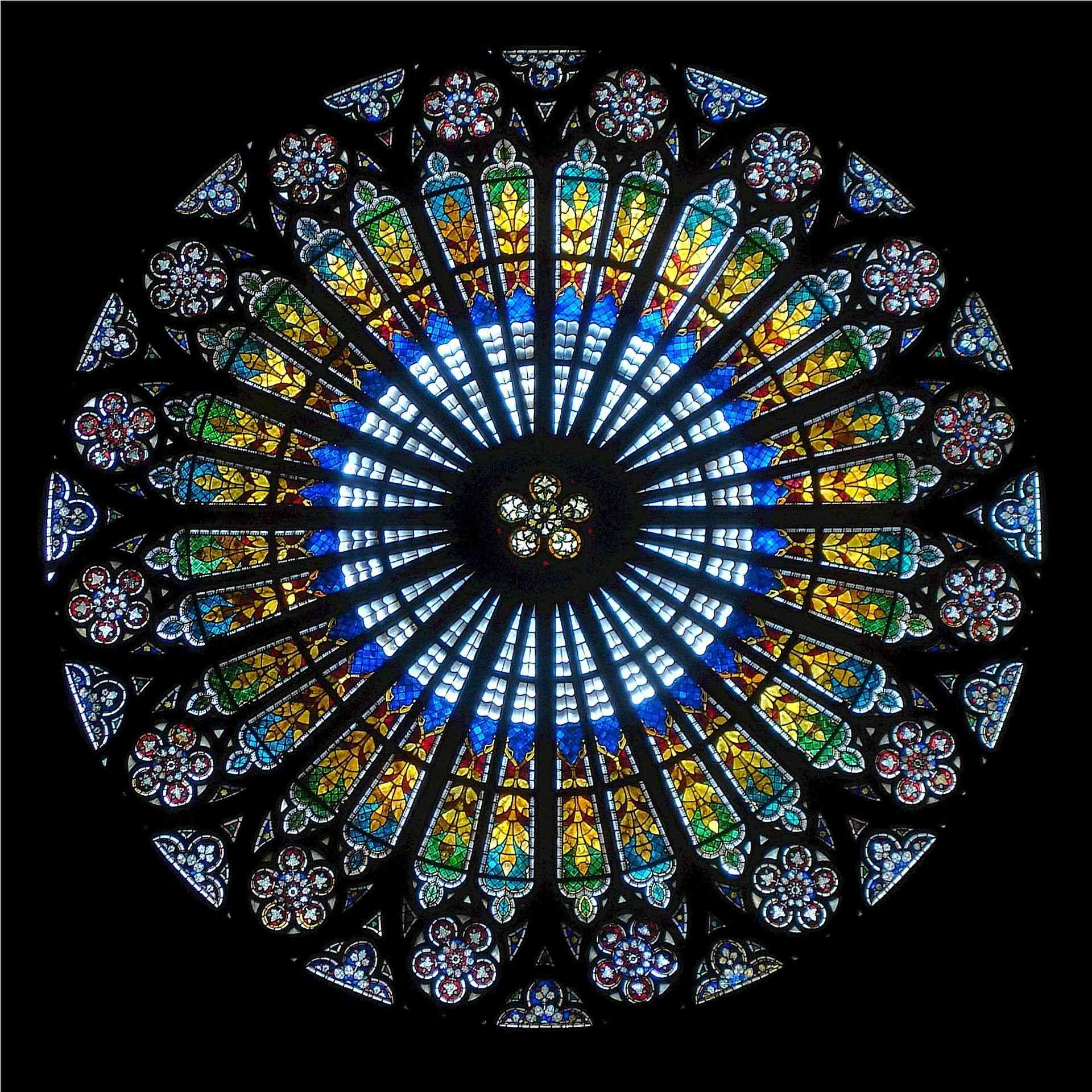Have you at any point been to Europe and got the chance to visit a stupendous catholic church however couldn't make sense of whether it was a Romanesque or a Gothic one? Well, don't you worry because, in the wake of perusing this article, I guarantee you that it won't happen once again.
First, let's discover together the basic glossary that we have to get acquainted with to get a better understanding of the contrasts between these architectural styles.

As a general rule, the churches follow a fairly specific layout: they more or less have a form of Latin cross (the lower branch is longer), oriented from east to west. This orientation has a strong symbolism: the entry is made in the west; the faithful therefore go towards the rising sun, materializing the divine light, and towards Jerusalem, the most important place of Christendom.
The entrance is, therefore mainly through one or many oversized doors located on the west facade. The framing of these is often ornamented with sculptures; this set is called "portal," which is made up of various elements.
We then cross an elongated stretch called "nave." On either side of the nave, there may be lower ceiling spreads leading to small alcoves housing chapels: these are the "aisles." At the end of the nave, we find the "horizontal arms" of the cross: these are the "transepts."
Then we arrive in the choir, the most important part of the church. It is here where we find the platform used for religious celebrations, the reading desk, and, in the most important buildings, the "stalls," formerly used by the religious, for services. These are rows of integral wooden seats.
Around the choir, it is possible to find a small corridor that goes around it. This area is called "ambulatory." It sometimes leads to small chapels. Outside, the ensemble formed by the choir, the ambulatory, as well as the chapels, are called "apse."
The ceiling of churches is made up of "vaults." These can take different forms which I will detail below. The vaults are supported by pillars whose top, the "marquee," is often decorated. Finally, some buildings have a dome or an arrow (a sort of very elongated and pointed steeple) above the crossing of the transepts.
Now that we have learned the necessary lexicon, let's discover the Romanesque architecture

The Romanesque art extends from the 10th to the 12th century. During this period, master builders experimented with many techniques to make buildings stronger, taller, and more complex.
The Romanesque art is declined in different ways not only according to the date of construction but also according to the region, as local styles emerged. Nevertheless, it is possible to find recurring and unique elements of Romanesque architecture.
Let's start with the element that conditions the rest: the vault. Initially, Romanesque art was strongly inspired by Roman architecture and adopted the semicircular vault. It is a semi-circle with a central stone called the "keystone." This arch rests on very thick walls and pillars. As the weight of the vault exerts a lateral pressure, the walls are lined with buttresses, a kind of pillar leaning against the walls on the outside of the building. Because of this type of vault, Romanesque churches are built with very thick walls and pierced only by small windows. This makes the interior dark.

The architecture is therefore sober, and this is an important characteristic of the Romanesque style. To decorate the building, the sculpture is favored on the capitals of the pillars and the tympanums of the portals. In general, they are creatures from the medieval bestiary, animals, plants, or saints. On the tympanums, it is often Christ in Majesty (i.e., seated on a throne) that is represented, surrounded by scenes from the Bible. Sometimes vaults and pillars are painted, but examples that have survived to the present day are rare.

Liking the article so far? Donate here to buy the author a coffee.
The desire to build higher and higher has not waned over time. In order to support very high round-barrel cribs, the architects added aisle aisles on either side of the nave. These then have a new type of vault: the "ribbed vault." It consists of four round arches resting on four pillars arranged in a square. Thus, the vaults cross each other. They are made much lower than the nave and a floor open to the nave called "tribune" is built over them. These have a "half-barrel vault" to exert a thrust contrary to that of the nave. In this way, the forces exerted by all the vaults of the building and the buttresses compensate each other and ensure stability despite the height.

Late Romanesque style buildings are much more imposing than their predecessors, brighter and generally a little more decorated since the technical constraints are less important. In some areas, at the beginning of the 12th century, the broken barrel vault appeared, consisting of broken arches. This system reduces the thrust of the cradle and will be improved in the Gothic style.
To sum up, it should be noted that Romanesque churches generally have round arches, thick walls, and pillars, which are rather dark and adopt a sober decoration.
Liking it so far? Check out the architectural history of Chicago by clicking here
Here is a French example characteristic of the Romanesque style:

When it comes to the Gothic architecture style:

It was born in France in the 12th century, more particularly in Île-de-France and Picardy. It develops mainly in the northern half of the country, then spreads to other regions and neighboring countries. Originally, this style was described as "French art," it was not called "Gothic" until the Renaissance.
Some countries have developed their own form of Gothic architecture, such as in England. I will only deal here with the French case.
The major innovation is the "cross vault." The Gothic abandoned the barrel vault in favor of the cross vault and opted for broken arches rather than the full arch. The nave is cut into more or less square spans, made up of four pillars on which rest broken arches. These arcs intersect in their middle called "keystone." The "warheads" are the stone ribs of the broken arches.

This system allows distributing the weight of the vault on the pillars and not on the walls. Thus, these can be hollowed out to be able to install large canopies. To compensate for the forces exerted on the pillars, the buttresses used in the Romanesque period are then improved: they are separated from the walls by stone arches called "flying buttresses."

These great architectural innovations allow builders to build much larger and taller, thinner, and more chiseled cathedrals. The facades are very worked; they are adorned with many sculptures and gargoyles. The stained-glass windows let in a lot of light into the buildings and illustrate scenes from the Bible in order to educate the faithful. The dominant colors are red and blue. Another characteristic element of the Gothic style, the "rosette," is a large round stained glass window that overhangs the entrance to the nave and which also adorns the facades of the transepts. The churches were often painted, but the polychromies often disappeared over time.

The general plan is similar to that of the large Romanesque churches, with very developed transepts. Two towers frame the west facade, sometimes surmounted by an arrow, as is found on cathedrals, at the crossroads.

Over the centuries, Gothic buildings were more and more worked, thus forming real "stone lace." The Gothic style spread until the 16th century before giving way to the Baroque style. However, Gothic art experienced a revival in the 19th and 20th centuries. This style is then called "neo-Gothic."
In summary, the Gothic style is characterized by vaults on crossed ribs, the presence of flying buttresses, large stained glass windows, and highly sculpted facades. It’s a style that looks for verticality.
One of the most important examples of the French Gothic style:

Other architectural styles exist, but they are more difficult to identify. As you can see, even the styles presented here are available in different ways depending on the time and region. Nevertheless, I hope this article will make it easier for you to spot the Romanesque and the Gothic next time you visit churches!
Did you know these styles? Do you have a preference for one of them? Leave your impressions in a comment.
Learn the Danish secret recipe to happiness




